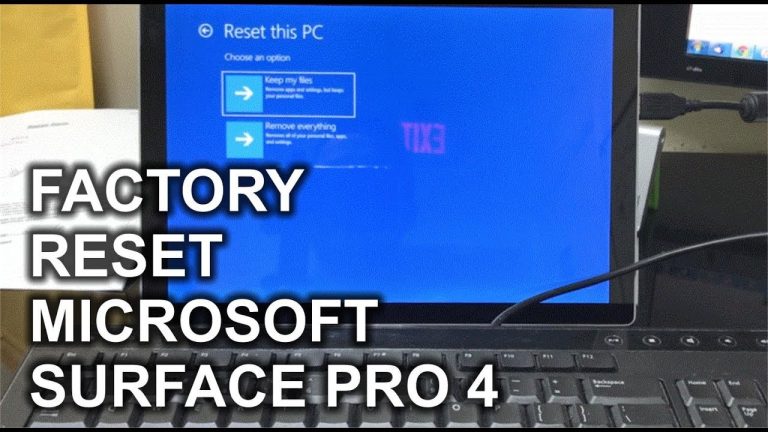How can you manage Quality Assurance challenges with remote teams?
Remote work, once relegated to the fringes, has now emerged as a pervasive phenomenon. The rise of high-speed internet, the prevalence of cloud computing, and an enhanced focus on achieving work-life equilibrium have thrust remote work into the limelight. As indicated by an Upwork study, the number of Americans engaged in remote work is projected to surge to 36.2 million by 2025, marking a huge 87% surge from levels seen before the pandemic. This transformation is not exclusive to the United States; it spans the globe. Enterprises worldwide are increasingly adopting remote teams to tap into a wider talent pool, curtail operational expenses, and enhance employee contentment.
Because of the remote work managing quality assurance of websites with the help of various testing such as unit testing, integration testing, automation testing, etc. have new challenges that need to be addressed for perfect harmony between testers and great user experience.
Understanding Quality Assurance Challenges in Remote Teams
There are mainly 3 challenges here as follows.
Communication Barriers
Lack of Face-to-Face Interaction
OA significant hurdle in remote quality assurance work is the lack of direct personal contact. Unlike in a conventional office environment, where quick questions might be resolved with a short walk to a coworker’s space, or impromptu idea-sharing can happen naturally, remote work relies heavily on digital communication. This shift can increase the risk of miscommunication and a sense of detachment among team members. Without the advantage of in-person cues, it’s also more difficult to assess colleagues’ emotional states and stress levels, which can contribute to a feeling of isolation and potentially affect both team spirit and the caliber of the work produced.
Time Zone Differences
Time zone disparities can be a substantial hurdle in remote QA efforts. When team members are spread across the globe, coordinating meetings, resolving urgent issues, and ensuring timely responses can be a logistical nightmare. A team member in California might be starting their workday just as a colleague in India is about to wrap up theirs. This time zone misalignment can introduce delays in communication and problem-solving, which can be especially detrimental when quick QA interventions are required.
Collaboration and Coordination
Difficulty in Team Building
Building a cohesive QA team can be challenging when team members are physically dispersed. In a traditional office, spontaneous interactions, team outings, and in-person meetings can foster a sense of camaraderie and trust among team members. In a remote setup, these opportunities for team building are limited, and team members may find it more challenging to bond.
Team cohesion is crucial for effective QA collaboration. Trust and a shared understanding of team dynamics contribute to a smooth workflow where team members can rely on each other’s expertise and judgment.
Maintaining Consistency Across Teams
Consistency in QA processes and practices is vital to ensure that the quality of work remains uniform across different teams or locations. In a remote setting, achieving this consistency can be difficult. Differences in working styles, interpretations of QA standards, or local practices can lead to variations in the quality of work.
Access to Resources and Tools
Technology and Infrastructure
Not all team members may have equal access to technology and infrastructure. In remote QA, disparities in the testing environments e.g. cross browser testing combinations, tools, and hardware can lead to variations in testing outcomes. While one team member may have access to a powerful workstation and a stable internet connection, another may be struggling with outdated equipment and unreliable internet connectivity.
These disparities can create inequities within the QA process, where certain team members may exhibit greater productivity and efficiency than their counterparts. Therefore, it is imperative to guarantee that all team members have equal access to the essential resources required for carrying out their QA tasks effectively.
Data Security Concerns
Remote work can expose organizations to data security risks. QA teams often deal with sensitive data, including proprietary software, customer information, and confidential business data. Ensuring that this data is adequately protected when team members work from various locations is a significant concern.
Data breaches or security lapses can have severe consequences, including financial losses and damage to an organization’s reputation. Managing data security in a remote QA environment requires robust security protocols, encryption, and access controls.
Strategies for Managing QA Challenges in Remote Teams
Following strategies can help manage challenges in QA tesms
Clear Communication
Effective Use of Communication Tools
Effective communication is the cornerstone of successful remote QA. To overcome the lack of face-to-face interaction, organizations must invest in and utilize a suite of communication tools. These tools should facilitate real-time chat, video conferencing, screen sharing, and file sharing.
Selecting the right communication tools is essential. Teams should consider factors such as ease of use, accessibility, and compatibility with existing systems. Training on these tools may also be necessary to ensure that team members can harness their full potential.
Regular Team Meetings
The foundation of consistent QA procedures is the establishment of precise QA standards. Companies must articulate definitive norms and protocols for QA tasks so that every member of the team is aligned with the expected outcomes.
These benchmarks should encompass all facets of QA such as devising test strategies, crafting test scenarios, monitoring defects, and compiling reports. With these standards as their guide, remote QA teams can operate in unison, confident in their compliance with a shared set of methodologies.
Establishing QA Processes and Guidelines
Defining QA Standards
Consistency in QA processes starts with well-defined QA standards. Organizations should establish clear guidelines and standards for QA activities, ensuring that every team member understands what is expected of them.
These standards should cover various aspects of QA, including test planning, test case development, bug tracking, and reporting. When standards are in place, remote QA teams can work cohesively, knowing they are adhering to a common set of practices.
Documenting Processes
Documenting QA processes and guidelines is crucial in a remote work environment. Written documentation acts as a navigational tool for team members, guiding them through intricate QA tasks and confirming adherence to set protocols. It’s essential that this documentation is readily available to the entire team and kept current to mirror any updates or enhancements to QA procedures. Collaborative documentation platforms can facilitate the creation and maintenance of QA guidelines.
Team Training and Skill Development
Online Training Programs
In remote QA teams, training and skill development should not be neglected. Online training programs and resources can help team members enhance their QA skills, stay updated with the latest industry trends, and acquire new certifications.
Organizations should invest in a learning management system (LMS) or partner with online training providers to offer courses tailored to their QA needs. These programs can cover topics ranging from test automation and test management to security testing and compliance.
Utilizing QA Tools and Software
LambdaTest
LambdaTest is an AI powered test orchestration and execution cloud-based test platform touted for its speed and reliability. Designed to address the needs of developers and QA testers for a robust, secure, scalable, and cost-effective testing solution, LambdaTest offers a suite of products for manual and automated testing, including Selenium, Cypress, Playwright, Puppeteer, native app testing, real device cloud, visual regression testing, and on-premise solutions.
Key offerings include HyperExecute, a next-gen smart test orchestration platform, and Test at-Scale (TAS), which provides test intelligence and observation to help teams improve testing efficiency. LambdaTest stands out for its near-zero flakiness,
Monitoring and Reporting
Key Performance Indicators (KPIs)
Monitoring the performance of remote QA teams is essential for maintaining high-quality standards. Key Performance Indicators (KPIs) specific to QA can help track progress and identify areas for improvement.
KPIs may include metrics such as defect density, test coverage, test execution efficiency, and the number of high-priority issues resolved. These KPIs should be regularly reviewed, and any deviations from established benchmarks should trigger corrective actions.
Case Studies: Successful QA Management in Remote Teams
To illustrate the practical application of the strategies discussed, let’s examine a few case studies of organizations that have successfully managed QA challenges in remote teams.
Company A: Overcoming Time Zone Challenges
Company A, a software development firm with teams spread across three continents, faced significant time zone challenges in its remote QA efforts. To address this issue, they implemented the following strategies:
- Rotating Meeting Schedules: The company adopted rotating meeting schedules to ensure that critical meetings accommodated team members from different time zones.
- Global Task Distribution: Tasks were distributed based on team members’ time zones, ensuring that critical activities occurred during overlapping working hours.
- Communication Hubs: The company established communication hubs in different regions to facilitate local coordination and support.
As a result of these strategies, Company A not only mitigated time zone challenges but also improved overall QA efficiency by leveraging the strengths of its diverse remote teams.
Company B: Ensuring Data Security in a Remote Environment
Company B, a financial institution that moved to remote work during the pandemic, faced heightened data security concerns. They took the following steps to address these challenges:
- Enhanced Data Encryption: Company B implemented robust encryption measures for data transmission and storage, ensuring that sensitive financial data remained secure.
- Access Controls: Strict access controls were put in place, limiting data access to authorized personnel only.
- Regular Security Audits: The company conducted regular security audits and vulnerability assessments to identify and rectify potential weaknesses.
These measures not only protected sensitive customer information but also instilled confidence in clients about the security of their data, a critical factor in the financial sector.
Overcoming Resistance to Remote QA Management
Despite the numerous benefits of remote QA management, some resistance from team members or leadership may exist. Addressing this resistance is essential for a smooth transition to remote QA work.
Employee Engagement and Motivation
Recognizing and Rewarding Remote QA Teams
Recognition and rewards can go a long way in motivating remote QA teams. Acknowledging their hard work and achievements, even in a virtual setting, can boost morale and job satisfaction.
Addressing Isolation and Burnout
Remote work can sometimes lead to feelings of isolation and burnout. To counter this, organizations should encourage social interactions among remote QA teams. Virtual team-building activities, online coffee breaks, and social chat channels can help team members connect on a personal level.
Management Support and Leadership
Setting the Example
Leadership plays a pivotal role in remote QA management. Managers and team leads should lead by example by demonstrating professionalism, effective communication, and a commitment to quality.
When leaders actively participate in virtual meetings, communicate transparently, and show empathy towards team members’ challenges, they set a positive tone for the entire team.
Providing Resources and Support
Management should ensure that remote QA teams have access to the resources and support they need to excel. This includes providing necessary tools, training, and assistance in overcoming challenges.
Leaders should also be receptive to feedback from remote team members and be willing to adapt strategies and processes based on their input.
Future Trends and Technologies in Remote QA Management
In the dynamic domain of remote Quality Assurance (QA) management, progressive strategies and technologies are integral to preserving product excellence and operational effectiveness. As remote work environments become more prevalent, organizations are pivoting towards avant-garde solutions to overcome inherent challenges. Upcoming trends and technologies poised to redefine the QA landscape include:
Artificial Intelligence (AI) and Automation
Artificial Intelligence (AI) and automation are poised to revolutionize remote QA management in several ways:
- Test Automation: AI-driven testing tools and frameworks can intelligently identify test cases, execute tests, and generate reports. This reduces the manual effort required for testing, making QA processes more efficient and less error-prone.
- Predictive Analytics: AI can analyze historical QA data to predict potential issues and areas that require more attention. This proactive approach allows QA teams to prioritize their efforts effectively.
- Chatbots for Support: AI-powered chatbots can provide instant support to remote QA teams, answering queries, and providing guidance on testing processes and tools.
- AI in Test Data Management: AI algorithms can help in generating and managing test data, ensuring that QA teams have access to the right data for testing scenarios.
- Automated Code Analysis: AI can analyze code quality and identify potential vulnerabilities, enabling QA teams to focus on critical areas.
Virtual Reality (VR) for Collaborative Testing
As remote teams continue to work from different locations, the need for immersive collaborative testing experiences becomes more apparent. Virtual Reality (VR) offers a promising solution:
- Immersive Testing Environments: VR can simulate complex testing environments, allowing QA teams to experience scenarios as if they were physically present. This is especially valuable for industries like gaming and virtual simulations.
- Real-Time Collaboration: QA professionals from across the globe can collaborate in a virtual space, making it easier to work together on testing tasks, share insights, and troubleshoot issues in real-time.
- Training and Skill Development: VR can be used for training new QA team members by providing them with interactive, immersive training experiences.
- Usability Testing: VR can be used to conduct usability tests with real users, providing valuable insights into user experiences in a virtual environment.
Conclusion
In conclusion, remote QA management may present challenges, but it also offers exciting opportunities for innovation and efficiency. By leveraging technologies like AI, VR, and enhanced data analytics, organizations can overcome the hurdles of remote QA management and ensure the continued delivery of high-quality products and services. Embracing these changes and staying at the forefront of technological advancements will be the cornerstone of successful remote QA management in the future.







